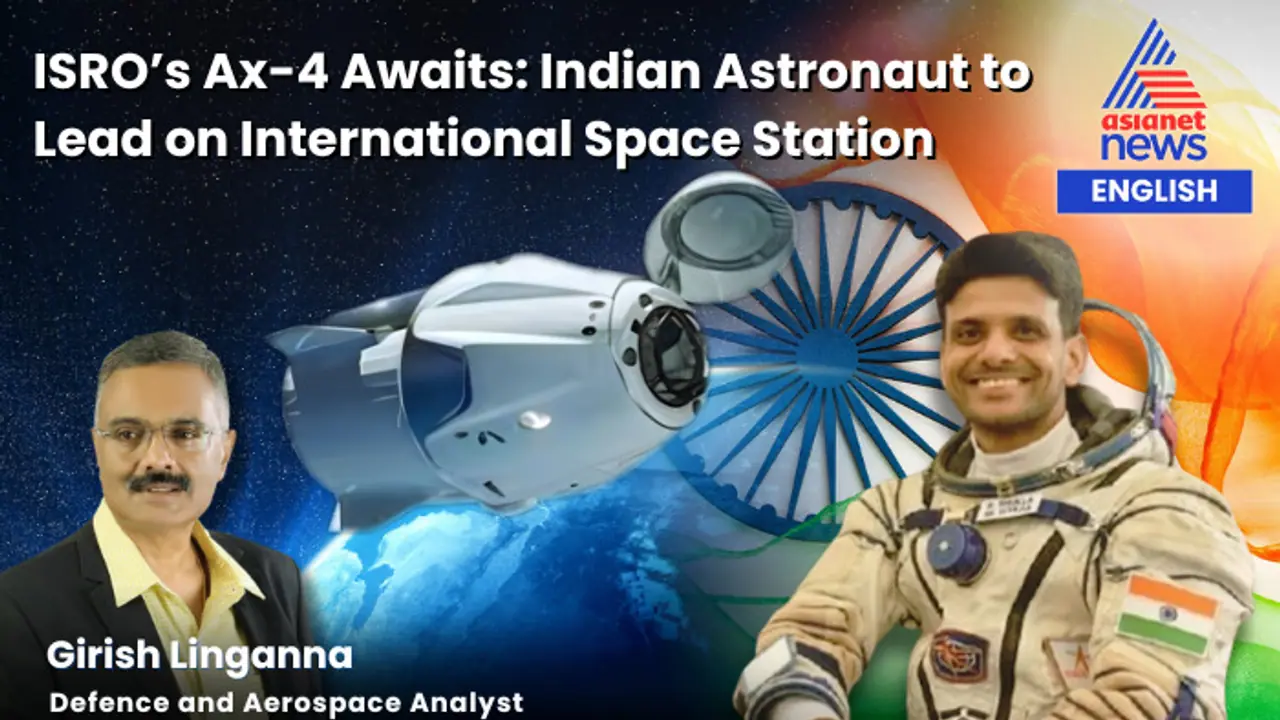The Axiom Mission 4 (Ax-4), set to launch in May 2025, is a historic collaboration between ISRO and international partners, featuring critical space science experiments and India’s first astronaut aboard the ISS.
The Indian Space Research Organisation (ISRO) is reaching new heights with the Axiom Mission 4 (Ax-4), set to launch no earlier than May 2025. This private astronaut mission to the International Space Station (ISS), led by Axiom Space, marks a historic moment for India’s space program. Ax-4 highlights ISRO’s scientific expertise and India’s rising role in global space exploration. More than a trip to space, it’s a symbol of India’s dreams, inspiring millions to aim for the stars.

Ax-4 is Axiom Space’s most research-intensive mission yet, with about 60 experiments from 31 countries. ISRO is leading seven of these, addressing key challenges for long-term space travel and improving life on Earth. These experiments show India’s ability to contribute groundbreaking science alongside partners like NASA and the European Space Agency (ESA). Each study tackles practical issues, from feeding astronauts to keeping them healthy in space.
One ISRO experiment, with NASA and Voyager Space, studies how astronauts use electronic screens in microgravity. By examining eye movements, pointing accuracy, and stress, ISRO aims to design better spacecraft controls, making future missions safer. The “Space Microalgae” project, with NASA and Redwire, explores growing three types of nutrient-rich microalgae. These could become a sustainable food source for astronauts on long missions to the Moon or Mars, reducing reliance on resupply missions.
With ESA, ISRO is testing cyanobacteria, tiny microbes that could produce oxygen and remove carbon dioxide in space. This could help create self-sustaining habitats for future space colonies. The “Muscle Regeneration” experiment, with NASA and BioServe Space Technologies, investigates why muscles weaken in microgravity and seeks treatments to keep astronauts strong. These findings could also help people on Earth with muscle-related diseases.
ISRO’s two “Sprouting Salad Seeds” experiments, with NASA and BioServe, focus on growing crops like lettuce over multiple generations in space. By studying their genetic stability and nutritional value, ISRO is paving the way for space farms to feed astronauts on distant missions. The most unique experiment involves tardigrades, tiny creatures called “water bears” that survive extreme conditions. ISRO, with NASA and Voyager, will study their survival and reproduction in space. Unlocking their secrets could protect humans in harsh space environments and inspire new technologies on Earth.
Ax-4 is a source of immense pride for India. Group Captain Shubhanshu Shukla, an Indian Air Force fighter pilot and ISRO astronaut, will serve as the mission’s Pilot. Trained at NASA, he’ll be the first Indian to visit the ISS and the second Indian in space, following Rakesh Sharma’s 1984 mission. Group Captain Prasanth Balakrishnan Nair, another skilled ISRO astronaut, is the standby pilot, ensuring India’s readiness. Shukla joins a global crew led by NASA veteran Peggy Whitson, with specialists from Poland and Hungary, for a 14-day mission on a SpaceX Crew Dragon spacecraft.
This mission is a key step for ISRO’s Gaganyaan program, India’s plan to send its own astronauts to orbit. Shukla’s ISS experience—adapting to zero gravity, conducting experiments, and following international protocols—will help ISRO prepare for Gaganyaan’s first flight. Ax-4 allows ISRO to test skills and gain expertise, proving India’s place among nations with human spaceflight capabilities.
Ax-4 reflects the changing world of space exploration. Commercial companies like Axiom Space are opening new doors, enabling countries like India to work with NASA and ESA. ISRO’s leadership in Ax-4 shows it’s a trusted partner in advancing space science.
Forty-one years after Rakesh Sharma’s iconic words from orbit, Shukla’s ISS journey, with Nair as backup, writes a new chapter for India. It inspires students and scientists alike, showing that India’s ambitions are limitless. Ax-4 carries a nation’s hopes, proving India is a major player in the space race. Through its seven pioneering experiments, ISRO is pushing science forward and making every Indian proud. This mission reminds us that with hard work and big dreams, the stars are within reach.
(The author Girish Linganna of this article is an award-winning Science Writer and a Defence, Aerospace & Political Analyst based in Bengaluru. He is also Director of ADD Engineering Components, India, Pvt. Ltd, a subsidiary of ADD Engineering GmbH, Germany. You can reach him, at: girishlinganna@gmail.com)


